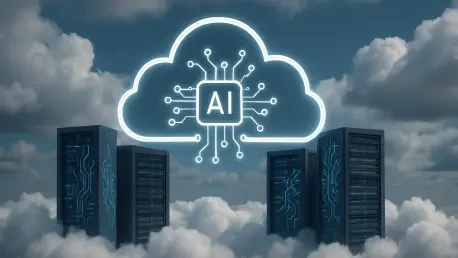Imagine a construction site where every potential hazard is detected in milliseconds, where machinery operates autonomously to adapt to shifting conditions, and where project delays are predicted and prevented before they even occur. This is not a distant dream but the reality being shaped by Edge AI, a cutting-edge technology that processes data locally—right at the source—using devices like sensors, drones, and wearables instead of relying on far-off cloud systems. In an industry long plagued by inefficiencies, safety risks, and cost overruns, this innovation is proving to be a game-changer. By enabling real-time decision-making directly on-site, Edge AI addresses critical challenges such as latency and connectivity issues, especially in remote or fast-paced environments. Its ability to deliver immediate insights is transforming the management of construction projects, paving the way for safer workplaces and more streamlined operations. This technology is not just an upgrade; it represents a fundamental shift in how the construction sector tackles its most persistent problems.
Revolutionizing Construction with Real-Time Solutions
Edge AI is emerging as a powerful answer to some of the construction industry’s most stubborn issues, including safety hazards and chronic project delays. Unlike traditional cloud-based AI systems that often stumble over slow data processing or unreliable internet connections, this technology operates directly on-site, providing instant responses that can be lifesaving. For example, it can identify risks such as unstable scaffolding or a worker dangerously close to heavy equipment in a fraction of a second. Its core applications span real-time safety monitoring, autonomous operation of machinery, and predictive maintenance, all of which work together to minimize downtime, enhance workflows, and protect lives. In an industry facing persistent labor shortages and escalating costs, the urgency for such innovation is undeniable, making Edge AI a vital tool for modern construction practices that demand both speed and precision.
Beyond immediate hazard detection, Edge AI reshapes operational efficiency by empowering construction sites with actionable insights at the moment they are needed. The technology enables equipment to function independently, adapting to changing conditions without constant human oversight, which is a significant advantage given the scarcity of skilled labor. Predictive maintenance, another key feature, analyzes wear patterns in machinery to anticipate failures before they disrupt schedules, thereby avoiding costly interruptions. This capability ensures that resources are allocated effectively, reducing waste and keeping projects on track. Moreover, by addressing connectivity challenges in remote locations, Edge AI guarantees that critical decisions are not delayed by external network issues, fostering a level of reliability that traditional systems struggle to match. As a result, it stands as a cornerstone for building safer, more efficient worksites.
Economic Impact and Market Growth Trends
The integration of Edge AI into construction is not just a technological shift but also a significant economic opportunity, aligning with broader industry trends that signal its growing importance. Market projections paint a compelling picture: the global Edge AI sector is expected to grow at a robust 36.9% compound annual growth rate (CAGR) through 2030, while the AI-driven construction market is forecasted to expand from $4.86 billion currently to $22.68 billion by 2032. North America is at the forefront, with an anticipated market size of $7.21 billion by 2034. These figures reflect the technology’s potential to deliver substantial financial returns for early adopters. Fueled by urbanization, advancements in 5G networks, and the push for sustainable infrastructure, Edge AI is becoming a foundational element of modern construction, promising measurable benefits for stakeholders ready to embrace it.
Diving deeper into these trends, the momentum behind Edge AI is driven by a confluence of factors that underscore its relevance in today’s construction landscape. The rapid pace of urban development worldwide demands smarter, faster ways to build, while sustainability goals push for innovations that reduce waste and energy use. Edge AI meets these needs by optimizing resource allocation and cutting inefficiencies that inflate costs. Additionally, the rollout of 5G technology enhances its capabilities, enabling seamless data processing even in the most challenging environments. This synergy positions the technology as a critical driver of progress in an industry under pressure to modernize. As market adoption accelerates, particularly in regions like North America, the economic ripple effects are expected to reshape investment priorities, making Edge AI a focal point for forward-thinking companies aiming to stay competitive.
Pioneering Platforms Driving Change
One standout in the Edge AI landscape is Veea’s Edge-First Platform, which is redefining how construction workflows are managed through its focus on on-site data processing. Tailored for rugged, often remote environments, this platform leverages AI-driven analysis of video feeds and sensor data to mitigate risks as they arise, ensuring immediate action when safety is at stake. Its scalable hardware, including drones and wearables, adapts to the unique demands of each site, offering flexibility that sets it apart. Reports from early users highlight its impact, with project overruns reduced by as much as 30%, demonstrating clear value in terms of cost savings and efficiency. By prioritizing local data handling, it overcomes the connectivity barriers that plague cloud-dependent systems, making it a leading solution in the expansive $200 billion-plus construction tech market.
Further distinguishing this platform is its ability to integrate seamlessly with existing processes, providing a practical bridge between cutting-edge technology and day-to-day operations on construction sites. The real-time risk mitigation it offers goes beyond simple alerts, incorporating sophisticated analysis to anticipate issues before they escalate. This proactive approach is complemented by hardware designed to withstand harsh conditions, ensuring reliability where it matters most. Such innovations position Veea’s solution as a benchmark for others in the field, particularly as the industry moves toward greater automation and data-driven decision-making. By addressing both immediate safety concerns and long-term project goals, this platform exemplifies how Edge AI can deliver transformative outcomes, setting a high standard for competitors and inspiring broader adoption across the sector.
Tangible Benefits for Safety and Operations
On the ground, Edge AI’s impact is most evident in its dual ability to enhance safety and operational efficiency, tackling some of the costliest pain points in construction. Through real-time analytics, it cuts down on rework, ensures resources are used effectively, and slashes downtime—issues that frequently drive budgets over the edge. When it comes to safety, the technology’s instantaneous hazard detection capabilities stand out, identifying problems like missing protective gear or unstable structures far faster than traditional systems slowed by processing delays. This rapid response can make the difference between a near miss and a tragic incident, fundamentally altering how risks are managed. By equipping sites with these tools, Edge AI fosters an environment where both workers and timelines are better protected, delivering results that resonate with project managers and safety officers alike.
Another layer of value comes from Edge AI’s capacity to align on-site progress with broader project planning through advanced data integration. By cross-referencing Building Information Modeling (BIM) data with real-time conditions, solutions like Veea’s platform can predict potential delays and ensure adherence to safety protocols, offering a comprehensive approach to project oversight. This predictive insight helps teams stay ahead of issues, maintaining momentum even under tight deadlines. Additionally, compliance with stringent safety standards becomes less of a burden and more of a built-in feature, reducing the likelihood of penalties or stoppages. The combined effect is a smoother, more controlled construction process that not only saves money but also builds trust among stakeholders. Edge AI, in this sense, acts as a catalyst for a safer, more predictable industry, proving its worth in every phase of a project’s lifecycle.
Reflecting on a Safer, Smarter Industry
Looking back, Edge AI has carved a transformative path in the construction sector by addressing long-standing inefficiencies and safety concerns with unprecedented precision. Its ability to process data locally through devices like sensors and drones has redefined how risks are mitigated and projects are executed, slashing delays and protecting workers with real-time alerts. Platforms like Veea’s Edge-First stand as testaments to this shift, demonstrating through tangible reductions in overruns that technology can deliver both safety and savings. Moving forward, the focus should center on scaling these solutions, ensuring accessibility for smaller firms, and navigating regulatory hurdles around autonomous systems. Strategic partnerships and continued investment in hardware innovation will be key to sustaining momentum. As the industry evolves, fully embracing Edge AI offers a clear roadmap to not just meet but exceed modern infrastructure demands, setting a foundation for lasting progress.









